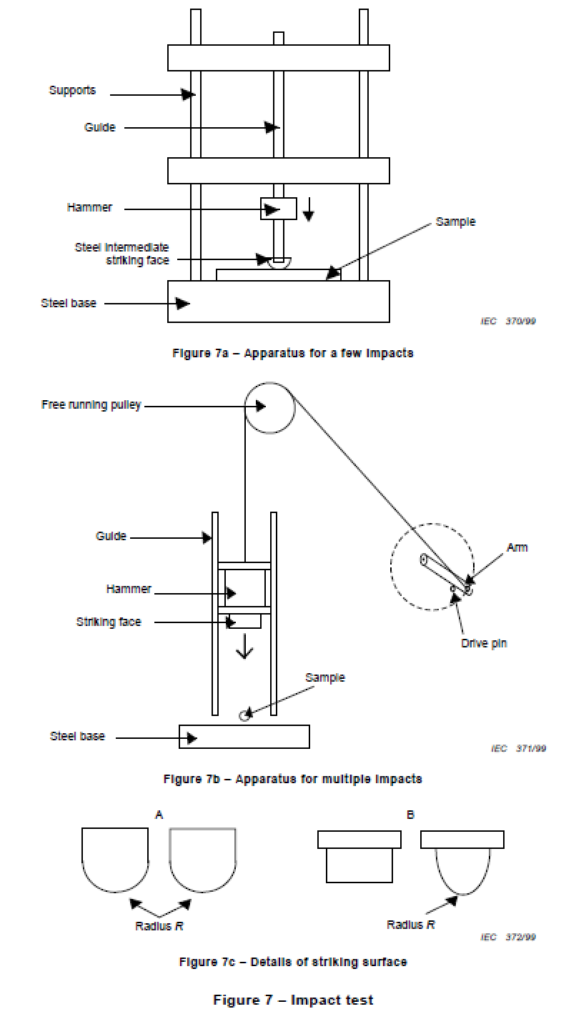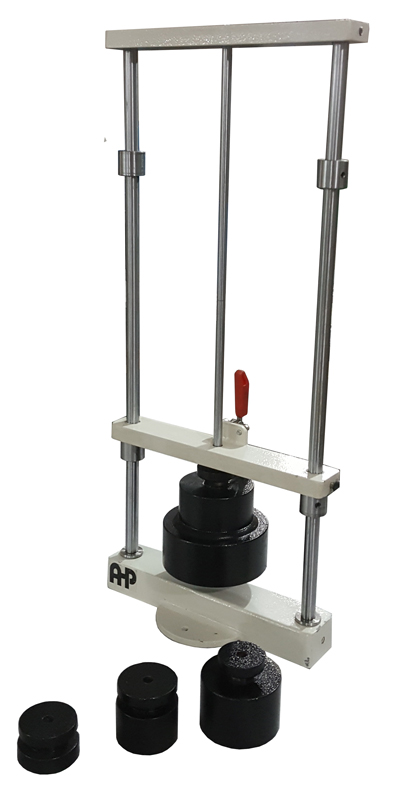8 Method E4: Impact
8.1 Object
The purpose of this test is to determine the ability of an optical fibre cable to withstand impact.
8.2 Sample
8.2.1 Sample length
The sample length shall be sufficient to carry out the specified test. When only physical damage is to be evaluated, the length may range from 1 m (for example for small diameter jumper cords or duplex cables) to 5 m (for larger diameter cables). Longer lengths may be necessary to permit optical measurements.
8.2.2 Termination
The sample shall be terminated at each end in a connector, or in a manner such that the fibres, sheathings and any strain members are clamped together in a representative manner. The clamps on the impact apparatus may be adequate, or the sample may be long enough so that no restraint is needed.
8.3 Apparatus
The apparatus shall allow an impact to be imparted to the cable sample which is fixed to a flat substantial steel base. When a single or only a few impacts are required, a suitable apparatus, as shown in Figure 7a, is used. This allows a weight to drop vertically onto a piece of steel which transmits the impact to the cable sample. When repeated impacts are required (say, more than five), a more practical apparatus, as shown in Figure 7b, is used, which allows multiple impacts by a drop hammer.
In both cases, other equivalent apparatus may also be used.
The striking surface contacting the sample shall be rounded, either as a hemisphere (Figure 7c, A) or a cylinder (Figure 7c, B). The radius R of the surface shall be specified in the detail specification.
The apparatus shall include any optical test equipment needed to measure the changes in optical performance as required in the detail specification, and specified in method A (Transmitted power) of IEC 60793-1-46.
8.4 Procedure
Unless otherwise specified, the conditions for testing shall be in accordance with standard atmospheric conditions. If necessary, the sample shall be pre-conditioned at standard atmospheric conditions for 24 h.
The mass of the weight or drop hammer and the height from which it falls shall be adjusted to give the value of impact energy shown in the detail specification. The number and rate of impacts, and their location on the sample shall be as specified in the detail specification.
8.5 Requirements
The acceptance criteria for the test shall be as stated in the detail specification. Typical failure
modes include loss of optical continuity, degradation of optical transmittance or physical
damage to the cable.
8.6 Details to be specified
The detail specification shall include the following:
a) number of impacts;
b) impact energy;
c) test temperature;
d) radius of the striking surface;
e) frequency of multiple impacts (if any);
f) location of impacts on the sample;
g) if optical continuity or change in transmittance is to be measured.


Impact Tester for Optical Cables According to IEC 60794-1-2 Method E4
- Hard chrome guide shafts
- Manual release of weight
- geometry of striker as standard
- 4 weights are included
